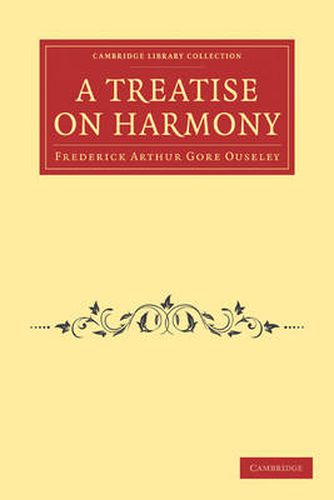Readings Newsletter
Become a Readings Member to make your shopping experience even easier.
Sign in or sign up for free!
You’re not far away from qualifying for FREE standard shipping within Australia
You’ve qualified for FREE standard shipping within Australia
The cart is loading…






Sir Frederick Arthur Gore Ouseley (1825-1889), English church musician, composer, Professor of Music at Oxford and Precentor of Hereford Cathedral, is best remembered for the foundation of St Michael’s College, Tenbury, and its extensive music library in 1856. Here he was concerned to maintain the tradition of sung daily offices and to provide a model for others to follow. This book, first published in 1868, is the first of Ouseley’s three works on music theory, and offers a structured approach to the subject, beginning with an explanation of musical notation and the harmonic series, then moving through the rules of harmony from tonic and dominant triads, to chord inversions, augmentation, diminution, modulation, the use of suspensions, pivot notes and cadence sequences. Of interest to music students and historians, the book contains exercises for the student and an appendix giving a number of musical examples.
$9.00 standard shipping within Australia
FREE standard shipping within Australia for orders over $100.00
Express & International shipping calculated at checkout
Sir Frederick Arthur Gore Ouseley (1825-1889), English church musician, composer, Professor of Music at Oxford and Precentor of Hereford Cathedral, is best remembered for the foundation of St Michael’s College, Tenbury, and its extensive music library in 1856. Here he was concerned to maintain the tradition of sung daily offices and to provide a model for others to follow. This book, first published in 1868, is the first of Ouseley’s three works on music theory, and offers a structured approach to the subject, beginning with an explanation of musical notation and the harmonic series, then moving through the rules of harmony from tonic and dominant triads, to chord inversions, augmentation, diminution, modulation, the use of suspensions, pivot notes and cadence sequences. Of interest to music students and historians, the book contains exercises for the student and an appendix giving a number of musical examples.